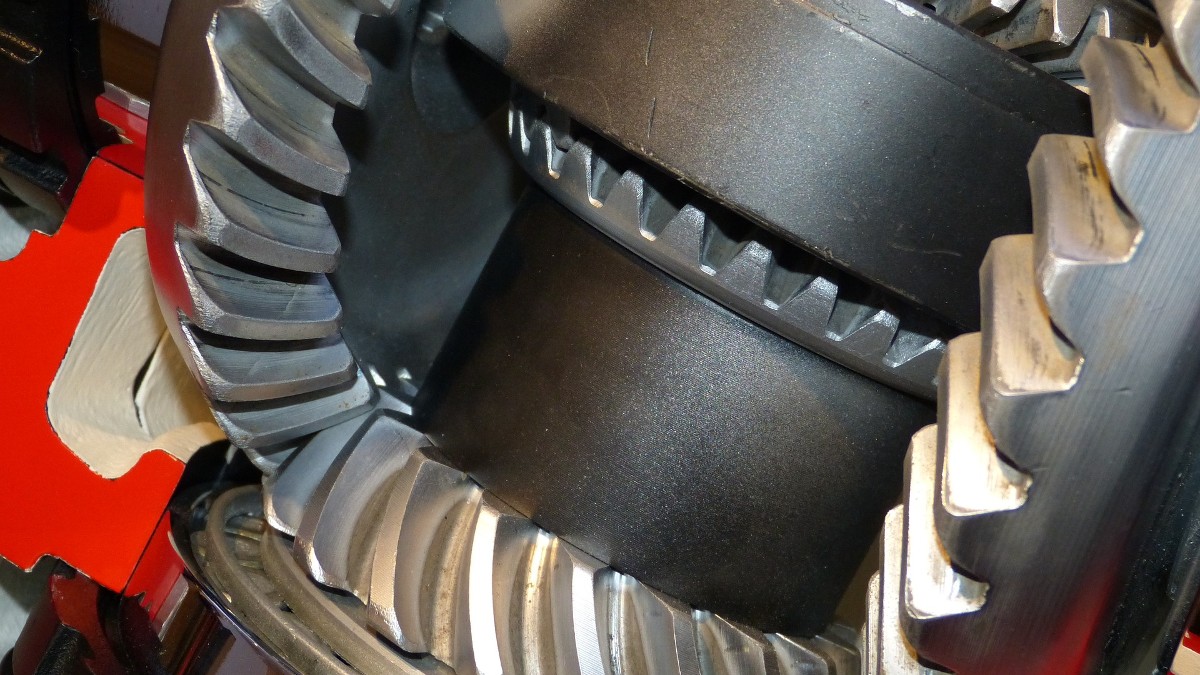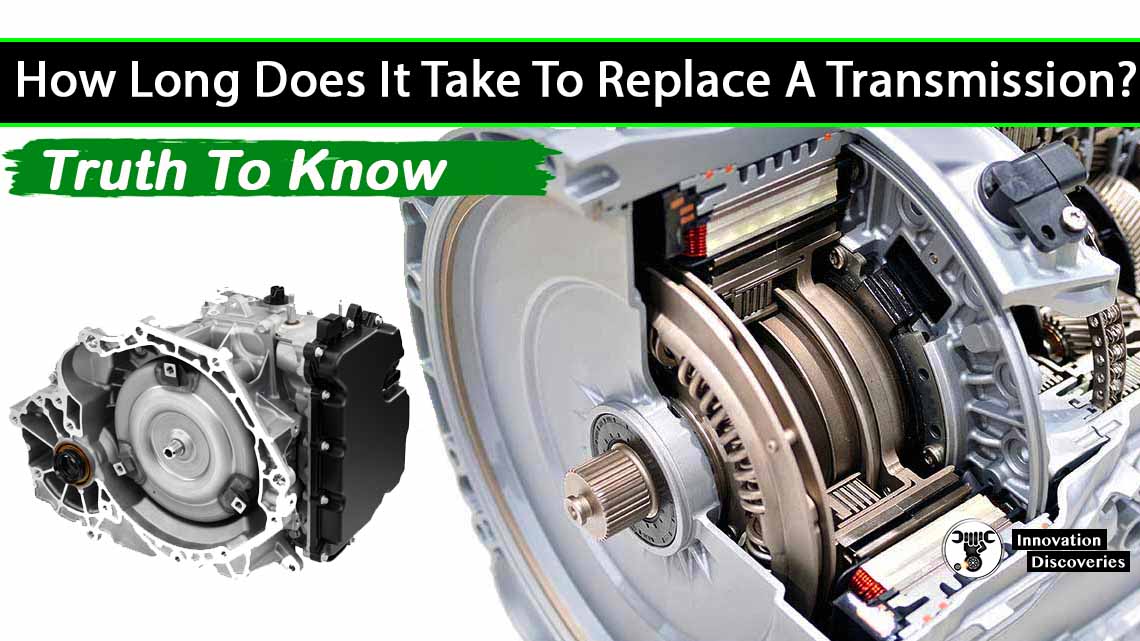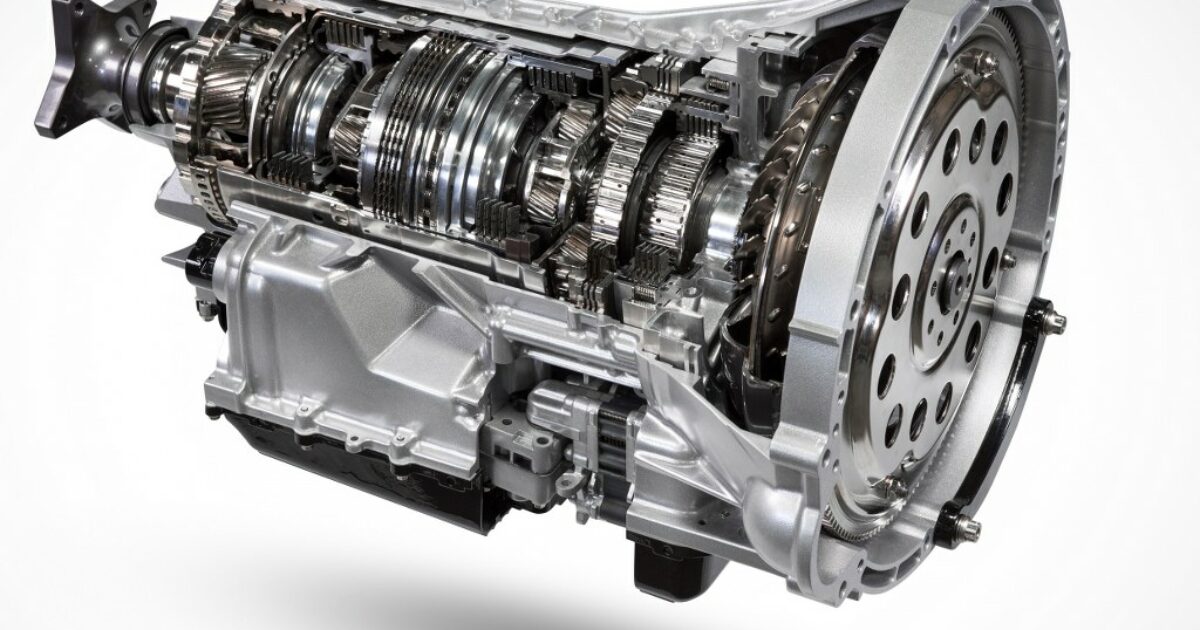How long does it take to repair a transmission? This question often sparks anxiety for car owners, especially when their vehicle starts exhibiting concerning symptoms. The answer, like many things in the automotive world, isn’t a simple one.
It depends on a variety of factors, from the type of transmission to the severity of the issue. While a simple fluid change might take a few hours, a complete transmission overhaul could require days or even weeks.
But don’t worry, we’re here to break down the complexities and provide you with a clearer understanding of what to expect.
Understanding the intricate workings of a transmission is crucial for grasping the repair process. Automatic transmissions, with their complex gear systems and hydraulic controls, often require more time and expertise than manual transmissions. CVT (Continuously Variable Transmission) systems, known for their smooth acceleration, have their own unique set of challenges when it comes to repairs.
The severity of the problem is another major factor. A minor issue, like a faulty solenoid, might be a quick fix, while a complete transmission failure could necessitate a full rebuild or replacement.
Factors Influencing Transmission Repair Time
The time it takes to repair a transmission can vary greatly depending on several factors. Understanding these factors can help you estimate the potential repair time and plan accordingly.
Type of Transmission
The type of transmission in your vehicle significantly influences the repair time.
- Automatic Transmissions:These transmissions are more complex than manual transmissions and often require specialized tools and expertise for repair. The intricate workings of automatic transmissions, involving hydraulic systems, solenoids, and electronic control units, can lead to more extensive and time-consuming repairs.
- Manual Transmissions:Manual transmissions are generally simpler in design compared to automatic transmissions. They have fewer components, which can make repairs faster and less complex. However, some manual transmissions, especially those with multiple gears or complex clutch systems, may still require significant time for repair.
- CVT Transmissions:Continuously variable transmissions (CVTs) are known for their smooth operation but can be more challenging to repair. Their unique belt-and-pulley system requires specialized tools and knowledge, and repairs can take longer than those for traditional automatic or manual transmissions.
Severity of the Transmission Problem
The severity of the transmission problem directly impacts the repair time.
- Minor Issues:Simple issues like a faulty sensor or a minor fluid leak can often be addressed quickly, sometimes within a few hours.
- Major Issues:More serious problems, such as a damaged transmission valve body, worn-out clutch plates, or a broken gear, require more extensive repairs and can take several days or even weeks to complete.
Vehicle Make and Model
The make and model of your vehicle can influence the complexity of the transmission repair.
- Older Vehicles:Older vehicles may have transmissions with less sophisticated designs, which can make repairs simpler and faster. However, finding parts for older vehicles can be more challenging, potentially delaying the repair process.
- Newer Vehicles:Newer vehicles often have more complex transmissions with advanced electronic control systems. These systems can require specialized diagnostic equipment and expertise, potentially extending the repair time.
Access to Parts and Skilled Mechanics
The availability of parts and skilled mechanics can significantly impact the transmission repair time.
- Common Parts:Common transmission parts are readily available, allowing for faster repairs.
- Specialty Parts:Specialty parts, especially for older or less common vehicles, may require special ordering and can delay the repair process.
- Skilled Mechanics:Experienced mechanics with specialized knowledge of transmission systems can efficiently diagnose and repair problems, leading to quicker turnaround times.
- Limited Availability:If skilled mechanics or specialized parts are in short supply, the repair time can be extended.
Common Transmission Repair Procedures
Transmission repair procedures encompass a wide range of tasks, each with its own complexity and associated time frame. Understanding these procedures is essential for both mechanics and car owners to gain insight into the intricacies of transmission repair.
Common Transmission Repair Procedures and Estimated Timeframes
The following table Artikels common transmission repair procedures and their estimated timeframes. These estimates are based on average repair times and may vary depending on the specific vehicle, the severity of the issue, and the expertise of the mechanic.
| Procedure | Estimated Time (Hours) | Complexity | Impact on Repair Time |
|---|---|---|---|
| Fluid Change | 1-2 | Relatively simple | Minimal impact |
| Filter Replacement | 2-3 | Moderate | Minor impact |
| Solenoid Replacement | 4-6 | Moderate to high | Moderate impact |
| Clutch Pack Replacement | 8-12 | High | Significant impact |
Fluid Change
A transmission fluid change is a routine maintenance procedure that involves replacing the old fluid with fresh fluid. This helps to keep the transmission clean and lubricated, preventing wear and tear on internal components. The process typically involves draining the old fluid, replacing the filter, and refilling the transmission with new fluid.
Filter Replacement
The transmission filter is responsible for removing debris and contaminants from the transmission fluid. A clogged filter can restrict fluid flow, leading to overheating and damage to the transmission. Replacing the filter is a relatively simple procedure that typically involves removing the old filter and installing a new one.
Solenoid Replacement
Solenoids are electro-magnetic valves that control the flow of fluid within the transmission. They are responsible for shifting gears and regulating fluid pressure. A faulty solenoid can cause a variety of problems, including slipping, rough shifting, and transmission failure. Replacing a solenoid involves removing the old solenoid, installing a new one, and testing the transmission to ensure proper operation.
Clutch Pack Replacement
The clutch pack is a set of friction plates that engage and disengage the transmission gears. A worn or damaged clutch pack can cause slipping, rough shifting, and transmission failure. Replacing a clutch pack is a complex and time-consuming procedure that requires specialized tools and expertise.
It involves removing the transmission, disassembling the clutch pack, installing a new clutch pack, and reassembling the transmission.
Typical Transmission Repair Time Ranges

The time it takes to repair a transmission can vary greatly depending on the specific problem, the make and model of the vehicle, and the availability of parts. Here’s a general overview of typical repair time ranges for common transmission issues.
Transmission Repair Time Ranges
The following table provides a general overview of typical repair time ranges for common transmission issues:
| Transmission Issue | Typical Repair Time Range |
|---|---|
| Transmission Slipping | 4-8 hours |
| Complete Transmission Failure | 8-16 hours |
| Gear Shifting Problems | 4-12 hours |
Note:These are just estimates, and the actual repair time may vary depending on the specific circumstances.
Importance of Professional Diagnosis

A thorough transmission diagnosis is the cornerstone of accurate repair time estimation and effective troubleshooting. Skipping this crucial step can lead to unnecessary delays, higher repair costs, and even further damage to your transmission.
A professional diagnosis helps identify the root cause of the transmission problem, ensuring a more efficient repair and preventing potential future issues. It’s like a doctor performing a comprehensive examination before prescribing treatment. A proper diagnosis can also prevent unnecessary repairs, saving you money and time.
Common Diagnostic Procedures, How long does it take to repair a transmission
To arrive at a precise diagnosis, skilled technicians utilize a variety of diagnostic procedures:
- Visual Inspection:This involves examining the transmission fluid for color, odor, and debris, as well as checking for leaks and damage to external components.
- Road Test:Driving the vehicle allows the technician to observe the transmission’s behavior under various conditions, such as acceleration, deceleration, and shifting.
- Computer Scan:Using a diagnostic scanner, the technician can access the transmission control module (TCM) to retrieve error codes, which provide valuable insights into the problem.
- Fluid Analysis:A sample of transmission fluid is analyzed for contaminants, such as metal shavings or friction materials, which can indicate wear or damage within the transmission.
- Pressure Tests:This procedure measures the hydraulic pressure within the transmission, providing information about the health of the pump and other internal components.
Transmission Repair Costs
Transmission repair costs can vary significantly depending on several factors, including the type of repair needed, the vehicle’s make and model, the location of the repair shop, and the labor rates charged. It’s essential to understand the factors that influence transmission repair costs to make informed decisions about your vehicle’s maintenance.
Typical Transmission Repair Costs
The following table Artikels the typical cost range for various transmission repairs. It’s important to note that these are estimates and actual costs may vary.
| Repair | Cost Range |
|---|---|
| Fluid Change | $100
|
| Filter Replacement | $150
|
| Solenoid Replacement | $300
|
| Clutch Pack Replacement | $1,000
|
| Complete Transmission Replacement | $2,000
|
Factors Influencing Transmission Repair Costs
Several factors can influence transmission repair costs, including:
- Labor Costs:Labor rates vary significantly depending on the location and the experience of the mechanic. Shops in urban areas or those with highly skilled technicians typically charge higher labor rates.
- Parts Prices:The cost of transmission parts can vary depending on the vehicle’s make and model, the quality of the parts, and the availability of aftermarket parts.
- Vehicle Type:Transmission repairs on luxury or high-performance vehicles often cost more than repairs on standard vehicles due to the use of more complex parts and specialized labor.
- Severity of the Problem:The extent of the damage to the transmission will significantly impact the repair costs.
A simple fluid change is less expensive than a complete transmission replacement.
Preventive Maintenance for Transmission Longevity: How Long Does It Take To Repair A Transmission
A well-maintained transmission can last for hundreds of thousands of miles, but neglecting its needs can lead to premature failure and costly repairs. By adhering to a preventive maintenance schedule and adopting good driving habits, you can significantly extend the life of your vehicle’s transmission and minimize the risk of unexpected breakdowns.
Regular Fluid Changes
Transmission fluid is crucial for lubricating and cooling internal components, preventing wear and tear. Over time, fluid degrades and loses its effectiveness, leading to increased friction and potential damage. Regularly changing the fluid helps maintain optimal performance and extends the transmission’s lifespan.
- Consult your owner’s manual for recommended fluid change intervals. Most manufacturers suggest a change every 30,000 to 60,000 miles, depending on driving conditions and vehicle type.
- Use the correct type of transmission fluid specified by the manufacturer. Using the wrong fluid can damage the transmission.
- During a fluid change, the filter should also be replaced to remove contaminants and ensure proper filtration.
Filter Replacements
The transmission filter traps debris and contaminants that can cause wear and tear on internal components. A clogged filter can restrict fluid flow, leading to overheating and damage.
- The transmission filter should be replaced at the same time as the fluid change, as recommended by the manufacturer.
- Some transmissions have an external filter that can be accessed and replaced separately. Others have an internal filter that requires a complete transmission overhaul for replacement.
- Regular filter replacements ensure optimal fluid flow and protect the transmission from harmful contaminants.
Proper Driving Habits
Driving habits significantly impact transmission longevity. Aggressive driving, such as rapid acceleration and hard braking, puts extra stress on the transmission, leading to premature wear and tear.
- Avoid harsh acceleration and braking. Smooth, gradual acceleration and braking minimize stress on the transmission.
- Do not shift gears manually while driving. The transmission’s computer is designed to optimize gear changes for fuel efficiency and smooth operation.
- Avoid prolonged idling. Idling puts extra strain on the transmission and can lead to overheating.
- Warm up the transmission before driving. This allows the fluid to circulate and reach optimal temperature for smooth operation.
Addressing Early Warning Signs
Recognizing and addressing early warning signs of transmission issues can prevent costly repairs down the line.
- Unusual noises, such as grinding, whining, or clunking, can indicate problems with the transmission.
- Slipping or delayed engagement of gears is another sign of transmission trouble.
- Rough shifting or jerking can indicate a malfunctioning transmission.
- A burning smell coming from the transmission area could signal overheating or fluid leakage.
- If you notice any of these symptoms, consult a qualified mechanic immediately for diagnosis and repair.
Importance of Professional Diagnosis
Diagnosing transmission problems requires specialized knowledge and equipment. Attempting to fix the problem yourself can worsen the issue and lead to more costly repairs.
- A professional mechanic can use diagnostic tools to pinpoint the exact problem and recommend the appropriate repair.
- Early diagnosis and repair can prevent further damage and save you money in the long run.
Last Recap

Navigating the world of transmission repairs can be daunting, but armed with knowledge and a reliable mechanic, you can approach the process with confidence. Remember, preventive maintenance is key to extending the life of your transmission and minimizing the need for costly repairs.
Regular fluid changes, filter replacements, and proper driving habits can go a long way in ensuring smooth and reliable performance. If you notice any unusual symptoms, don’t ignore them. Early detection and intervention can save you time, money, and stress in the long run.
FAQ Overview
What are the most common signs of transmission problems?
Common signs include slipping gears, delayed shifting, rough shifting, grinding noises, and a burning smell. If you notice any of these, it’s important to have your transmission inspected by a professional.
How often should I have my transmission fluid changed?
The frequency of transmission fluid changes varies depending on the vehicle and driving conditions. Consult your owner’s manual or a trusted mechanic for specific recommendations. Generally, it’s a good idea to have your transmission fluid changed every 30,000 to 50,000 miles.
Can I add transmission fluid myself?
While adding transmission fluid might seem simple, it’s not recommended. Overfilling the transmission can cause damage. It’s best to have a mechanic inspect and service your transmission.
How much does a transmission replacement cost?
The cost of a transmission replacement can vary widely depending on the make and model of your vehicle, the type of transmission, and labor costs in your area. It’s advisable to get quotes from multiple reputable repair shops before making a decision.